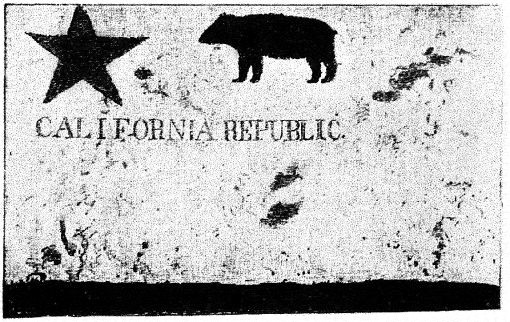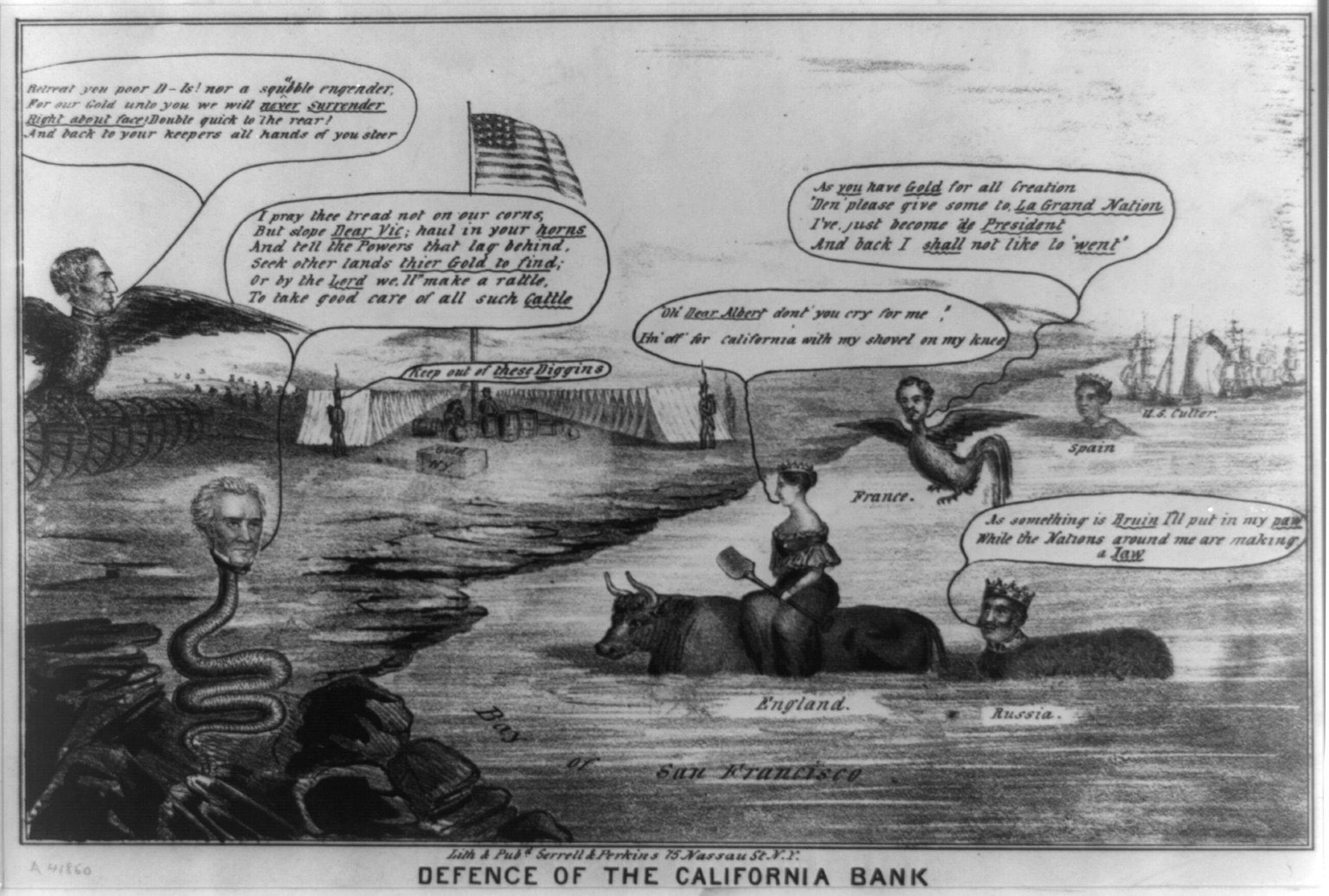A Promise of Gold
The Primary Aim of Rhetoric Is to Create 'Action' Between Speaker/Writer & Audience
A golden promise may not be as fulfilling, but a promise of gold is capable of moving entire masses. Be it a shiny new opportunity like gold or a fight for American ideals, California charmed many trailblazers into its embrace. Many hopeful souls undertook “The Elephant”1 towards the west. The very end of western land was the final frontier of North America, which was invaded by both settlers in search of precious metal as well as foreign powers, also resource hungry.

The picture above depicts the original flag of California. It has a star on the left and a grizzly bear in the middle. The two are positioned above the words CALIFORNIA REPUBLIC. The star signifies a state, and the grizzly bear is a symbol of strength and resilience. It was used by early California settlers. California got inhabited as a result of the Gold Rush; it previously belonged to Mexico and was far away from the rest of the American settlements. It all began when James Marshall, an emigrant from New Jersey found gold by accident in 1848 in Sutter’s Mill. The scent of California gold attracted American youth, and had them changing their priorities from owning land to mining gold, with many dying in the ensuing chaos. What represents how sudden and absurd this change was is the growth of San Francisco’s population, which went from having 500 citizens in 1848, to having over fifty thousand in 1853. But apart from the American youth, the gold also attracted foreign influences.

The lithograph above, titled “Defense of the California Bank”, depicts the events preceding the California Gold Rush that began in the summer of 1848. The scene shows the bay and the coastal area of San Francisco. Among the forty-eighters and forty-niners2were: Great Britain, represented by Queen Victoria riding an ox and singing a song to the tune of “Oh Susanna”3; Russia, represented by Czar Nicholas in the form of a bear. A rooster bearing the head of Louis-Napoleon is flying overhead, representing France; Queen Isabella of Spain is pictured in the background, as she’s swimming towards the land. Lastly, far away on the open sea, is the U.S. Cutter, a ship carrying the U.S. coast guard. On the American side of the battlefield are visible: Firstly, a sentry in a camp is encouraging his fellow men to protect their land and their goods. Secondly, General Zachary Taylor, who’s taken the form of an eagle and is watching over a row of cannons to the left and threatening the encroachers. And lastly, the president of the United States, James K. Polk, embodied as a snake and cursing the attackers. The lithograph implies that the invading powers were as gold-hungry as the United States defending it.
To conclude, gold attracted multitudes of different people and nations. And no matter the side one was on, or social status one had, nothing mattered when provided with a shiny opportunity that was California gold. It was quite literally a chance to die for.
- 1Another name for the California Trail
- 2Fourty eighters/Forty niners - a name representing the attacking force, yet to set their foot on the coast of San Francisco
- 3A song remembered as the hymn of the Californian gold diggers